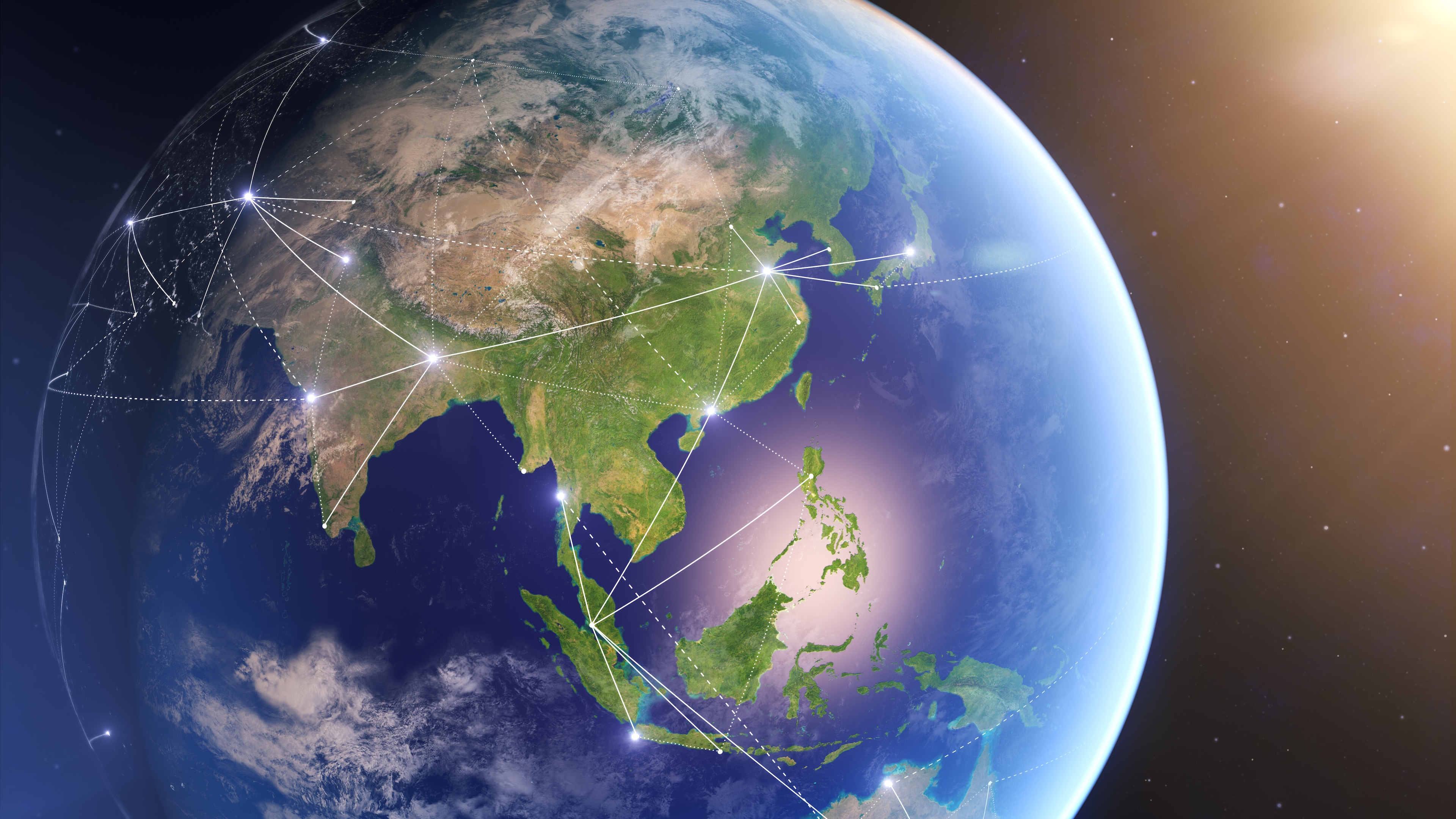Can the green economy bring sustainable growth to Africa?
Stay up to date:
Future of the Environment
A new report makes the strong case for the importance of the green economy in creating sustainable wealth and growth in Africa. It finds that Africa is already seizing the opportunity to make a transition to the green economy, providing jobs and social benefits as well as protecting vital natural resources.
Called Building Inclusive Green Economies in Africa, Experiences and Lessons Learned 2010-2015, the report was launched on 5 March in Cairo, at the African Ministerial Conference on Environment (AMCEN) and provides an overview of where Africa, as a region, stands in terms of transitioning to an inclusive green economy. It summarises the prospective gains and challenges associated with investing in a green economy and outlines a way forward to prioritise policy reforms.
Crucially, it includes a specific section on how to turn strategies and challenges into opportunities.

The growth of Senegal’s green economy
It cites as examples of successes the growth of Kenny’s GDP by 12%, raising Senegal’s life expectancy rate by 1.3 years, and reducing Burkina Faso’s divide between countryside and city by 8%.

Projections of job growth from business as usual and the green economy in South Africa.
Strategies of particular importance include switching the burden of taxation from counter-productive activities to constructive ones such as oil tax levies in Algeria, and tax breaks to encourage forest rehabilitation in Burkina Faso and organic exports in Uganda.
As of 2005, Africa’s biologically-rich terrestrial areas shrank by more than half due to cultivation, degradation or urbanisation. This represents an enormous loss of potential income. Valuing this is crucial to promoting the green economy.
Africa is urbanizing faster than any other continent, so, the report says: “The sooner green economy policies and actions can be pursued, the easier and more affordable the transition will be.
“The cost of intervention will only increase as ecosystems are damaged; and the cost of inaction is not negligible, especially for the millions of people in the lowest income classes that are most directly dependent upon natural resources for their livelihoods.”
As the Minister of Environment from Uganda, speaking at UNEP Governing Council 2013, has described it: “the Green Economy is our life, it is our survival.”
Measures to support the green economy will include investment in technology to improve agricultural and industrial productivity, as well as for increasing energy and water availability in rural and urban areas.
Speaking at AMCEN, UN Under-Secretary-General and UNEP Executive Director Achim Steiner said, “This report makes clear that green investments can not only drive economic growth faster than business as usual investments, but represent a valuable opportunity for Africa to conserve the natural wealth on which economies, lives, and livelihoods depend.
“Enormous sustainable, renewable, and untapped resources exist on this continent. Africa receives 325 days per year of sunlight and is using less than 7 per cent of its hydroelectric potential, and less than 2 per cent of its geothermal capacity.
“Many African countries are beginning to tap into this potential. Green investments in renewable energy development in Burkina Faso are expected to yield an increase in electricity generation from renewables 180 per cent greater than business as usual investments.
“And in South Africa, a new Green Economy Accord is set to create 300,000 green jobs by 2020. The list of successful examples of green investments in Africa is far greater than what is generally imagined. The potential is enormous.
”But what is required to scale-up these investments is the right mix of policy, incentives, capacity development, and informational tools. Here at AMCEN, policy-makers and experts have convened to identify the best means of achieving this mix and bringing the enormous potential of these green investments to scale,” he concluded.
Game changing innovations do not have to be expensive to make a big difference.
For example, one small solar Light-Emitting-Diode (LED) can save a family more than US$1 per week on kerosene, and enable a child to complete their schoolwork in the evening without any negative side effects on health, an innovation of immeasurable importance on a continent where 25 million children are not able to attend school.
The report includes a:
Checklist for Green Economy Opportunities
These focus on mid- to long-term development and equity, and needs for investment in institutional and human capacity, and effective implementation.
Goals and Principles
- Intra and inter-generational equity: measures that prevent passing of costs on to future generation and actions which distribute benefits of improved economic and social development and environmental conservation;
- Equity and inclusiveness: equitable distribution of wealth, providing equal opportunities for the different segments of the population while promoting social justice and cohesion;
- Job creation and economic diversification: supporting the growth of sustainable economic sectors that have a high potential for job creation, particularly for the poorer segments of the population;
- Environmental integrity: ensuring environmental and ecosystem integrity for longterm sustainability and economic resilience.
Capacity
- Good governance: transparency, accountability and public participation throughout policy formulation, implementation, monitoring and assessment;
- Human resource development: institutions and equitable access to education and information to support inclusive green economy strategies.
Policy
- Revitalisation and diversification of the economy: incentives and disincentives to level the arena to encourage the reallocation of public spending and private investment to green economy activities;
- Competitiveness and market access: ensure enhanced competitiveness and market access for locally produced products and services, particularly those that improve the sustainability of systems via infrastructure;
- Efficiency: promote the efficient use of resources, to lower costs and increase selfsufficiency and resilience while creating jobs and economic opportunities;
- Research and development: environmentally sound innovative technologies and practices as enablers of green and sustainable development.
Tools
- Integrated policymaking: integrated environmental, social and economic considerations throughout the planning process;
- Inter-ministerial coordination and multi-stakeholder process: elimination of redundancy, conflict of interests and overlap between different sectors and actors;
- Sustainable development indicators: use integrated environmental and economic accounting to measure progress, increase transparency and inform policy formulation and assessment.
The report leaves no doubt that across Africa governments are formulating strategies to initiate growth in the green economy, including in Rwanda, Ethiopia, South Africa, Mozambique, Kenya, and Ghana.
These strategies, developed through an inter-governmental process and supported by detailed macroeconomic studies, provide a framework for mainstreaming GE in national development planning and for delivering on sustainable development goals now being discussed in the United Nations.
The benefits of green investments tend to be felt over the medium-term, as the state of the environment improves and increases overall human well-being, making it essential to plan effectively for commonly desired development pathways.
Enabling conditions exist, and while implementation is not easy, a growing amount of evidence – from villages to nations – is showing that incorporating green economy principles in development planning is possible and is already happening – offering lessons for the rest of the world as countries reflect on their growth and investment priorities in the post-2015 period.
This article is published in collaboration with the Sustainable Cities Collective. Publication does not imply endorsement of views by the World Economic Forum.
To keep up with the Agenda subscribe to our weekly newsletter.
Author: David Thorpe is a Special Consultant at the Sustainable Cities Collective.
Image: A girl selling apples by the roadside waits for customers. REUTERS/Finbarr O’Reilly.
Don't miss any update on this topic
Create a free account and access your personalized content collection with our latest publications and analyses.
License and Republishing
World Economic Forum articles may be republished in accordance with the Creative Commons Attribution-NonCommercial-NoDerivatives 4.0 International Public License, and in accordance with our Terms of Use.
The views expressed in this article are those of the author alone and not the World Economic Forum.
Related topics:
Forum Stories newsletter
Bringing you weekly curated insights and analysis on the global issues that matter.
More on Economic GrowthSee all
Atul Kumar
August 12, 2025
Elizabeth Henderson and Daniel Murphy
August 8, 2025
Li Dongsheng
July 31, 2025
Charlotte Edmond
July 30, 2025
Naoko Tochibayashi
July 30, 2025
Matt Watters
July 29, 2025





